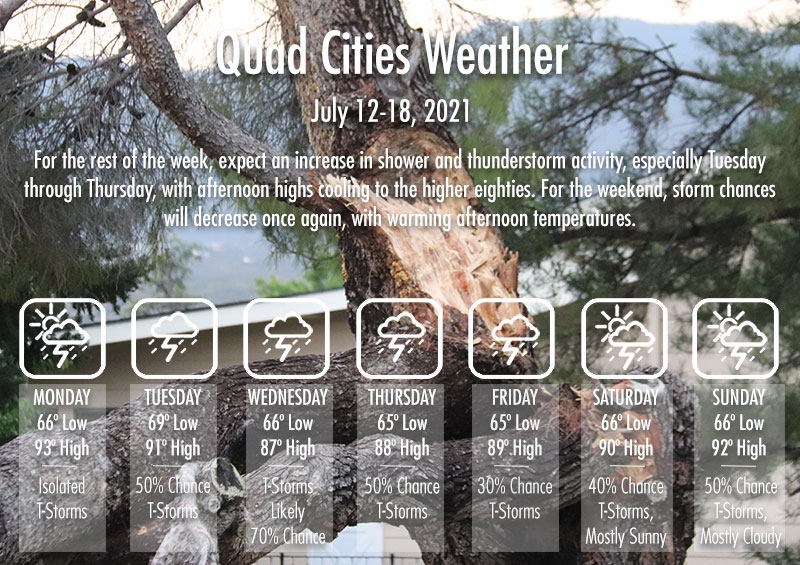Big Idea
- The Sunday storm brought golf-ball sized hail, up to 2” precipitation, and localized flash flooding
- Increasing moisture will bring an uptick in monsoon activity
- Thunderstorms will become more widespread
- Temperatures will be cooler
The monsoons are here!
Overview:
Sunday’s storms brought localized golf-ball sized hail, up to 2 inches of precipitation, 80 kt winds, and even a funnel cloud, according to local news reports (see here and here). This week, increasing moisture will bring an uptick in monsoon activity, with thunderstorms becoming more widespread, along with cooling temperatures.
Forecast Table:
https://www.wrh.noaa.gov/forecast/wxtables/
Navigate on the map to your location and click for a detailed local forecast.
Forecast:
Today, middle level cloud will disperse producing afternoon temperatures in the high nineties and a 30% chance of showers and thunderstorms later this afternoon. For the rest of the week, expect an increase in shower and thunderstorm activity, especially Tuesday through Thursday, with afternoon highs cooling to the higher eighties. For the weekend, storm chances will decrease once again, with warming afternoon temperatures.
Additional notes for the weather nuts:
My comment last week about temperature change due to altitude prompted quite a discussion. Temperature decrease with height on a hot sunny summer AZ afternoon is very close to 3C (5.4F) per 1,000 ft, regardless of location or elevation. But that does not always mean that we can use this to estimate average temperatures for different elevations. At a low elevation like Phoenix, extremely hot temperatures result in greater rate of heat loss. Like any natural system, it’s hard to push it to extremes. At the same time, solar heating is stronger at higher elevations because there is less atmosphere above to absorb and scatter the radiation from the sun. These factors reduce the warming at low elevations and enhance it at higher elevations. As you can see, it’s complex. The long term average difference due to elevation change is 2C (3.6F) per 1,000 ft, but it can vary depending on time of year and time of day.
What causes strong thunderstorm winds? Damaging winds are often called “straight-line” winds, to differentiate from the rotating winds in a tornado. Most thunderstorm winds are a result of outflow generated by a thunderstorm downdraft. Downdrafts initiate when falling precipitation drags air with it and are helped by evaporative cooling within the downdraft, along with thunderstorm dynamics. When the downdraft hits the ground, it spreads out horizontally in all directions. This is called a downburst. A downburst smaller than 4 km across is called a microburst. Damaging winds are classified as those exceeding 50 kt. Damage from severe thunderstorm winds accounts for half of all severe reports in the lower 48 states and is more common than damage from tornadoes.
Have a great week!
Mark.
Mark Sinclair, Ph.D.
Program Chair and Professor, Meteorology
Department of Applied Aviation Sciences, College of Aviation
3700 Willow Creek Rd
Prescott, AZ 86301
928.777.3842
This email address is being protected from spambots. You need JavaScript enabled to view it.
Embry-Riddle Aeronautical University
Florida | Arizona | Worldwide
MetMail is an unofficial weather discussion and forecast transmitted once a week via email.
Embry-Riddle offers an undergraduate bachelor-of-science degree program in Meteorology
https://erau.edu/degrees/bachelor/bachelor-of-science-degree-in-applied-meteorology?campus=prescott
Please spread the word to all potential qualified candidates!
Embry-Riddle Prescott Meteorology Website:
This has a selection of model forecast products and other links.
